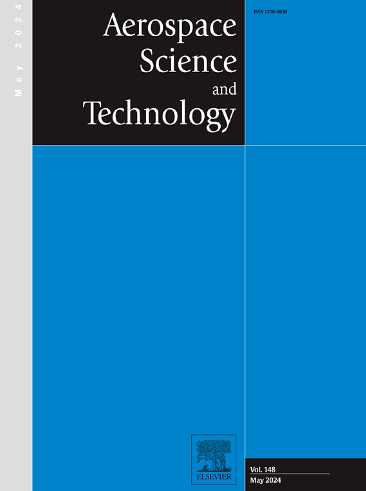Influence of the fuel jet injection angle on the combustion process of a gel scramjet
IF 5
1区 工程技术
Q1 ENGINEERING, AEROSPACE
引用次数: 0
Abstract
Boron-containing gel propellants have high-energy densities and controllable injection characteristics, can significantly improve ramjet performance, and present a new direction for hypersonic vehicle development. To address the performance optimization problem of boron-containing gel scramjet engines, this study combines supersonic turbulence combustion interaction equations and the multiphase flow equations to make use of a combustion flow simulation method for the internal flow fields of boron particle gel ramjet engines at a multi-grid scale. Numerical simulations of the internal flow field of a combustion chamber at different fuel injection angles were conducted. The results indicated that as the fuel injection angle increased, the fuel jet penetration effect was enhanced, and the obstruction effect on the supersonic airflow became more pronounced. When the injection angle exceeds 35°, the supersonic airflow flows along the lower wall at a particular deflection angle. As the angle increases, the main combustion region of the fuel moves from the end of the combustion chamber to the downstream cavity. When the fuel injection angle reaches 80°, the temperature increase efficiency reaches its optimal value of 71 %. The research findings provide an optimized design solution for boron-containing gel propellant scramjet engines.
燃油喷射角对凝胶超燃冲压发动机燃烧过程的影响
含硼凝胶推进剂具有高能量密度和可控的喷射特性,能够显著提高冲压发动机的性能,为高超声速飞行器的发展提供了新的方向。针对含硼凝胶超燃冲压发动机的性能优化问题,结合超声速湍流燃烧相互作用方程和多相流方程,采用多网格尺度下硼颗粒凝胶冲压发动机内部流场的燃烧流动模拟方法。对不同喷油角度下的燃烧室内部流场进行了数值模拟。结果表明:随着燃油喷射角的增大,燃油射流侵彻效应增强,对超声速气流的阻塞效应更加明显;当喷射角超过35°时,超声速气流沿下壁以一定的偏转角流动。随着角的增大,燃料的主要燃烧区域从燃烧室的末端向下游空腔移动。当喷油角达到80°时,增温效率达到最优值71%。研究结果为含硼凝胶推进剂超燃冲压发动机提供了一种优化设计方案。
本文章由计算机程序翻译,如有差异,请以英文原文为准。
求助全文
约1分钟内获得全文
求助全文
来源期刊

Aerospace Science and Technology
工程技术-工程:宇航
CiteScore
10.30
自引率
28.60%
发文量
654
审稿时长
54 days
期刊介绍:
Aerospace Science and Technology publishes articles of outstanding scientific quality. Each article is reviewed by two referees. The journal welcomes papers from a wide range of countries. This journal publishes original papers, review articles and short communications related to all fields of aerospace research, fundamental and applied, potential applications of which are clearly related to:
• The design and the manufacture of aircraft, helicopters, missiles, launchers and satellites
• The control of their environment
• The study of various systems they are involved in, as supports or as targets.
Authors are invited to submit papers on new advances in the following topics to aerospace applications:
• Fluid dynamics
• Energetics and propulsion
• Materials and structures
• Flight mechanics
• Navigation, guidance and control
• Acoustics
• Optics
• Electromagnetism and radar
• Signal and image processing
• Information processing
• Data fusion
• Decision aid
• Human behaviour
• Robotics and intelligent systems
• Complex system engineering.
Etc.
 求助内容:
求助内容: 应助结果提醒方式:
应助结果提醒方式:


